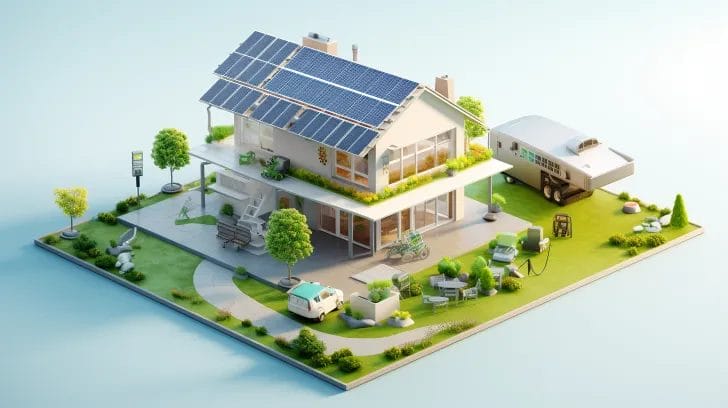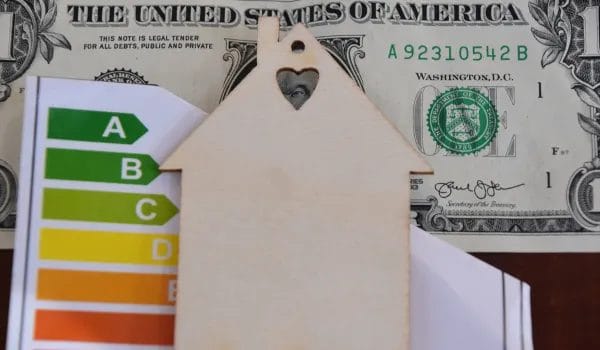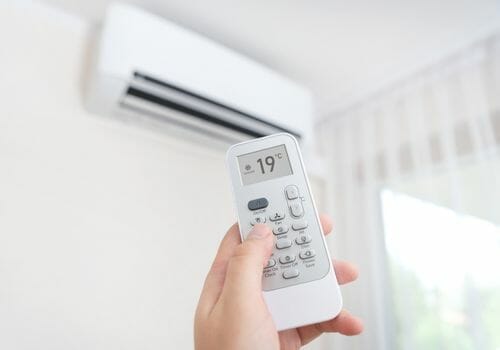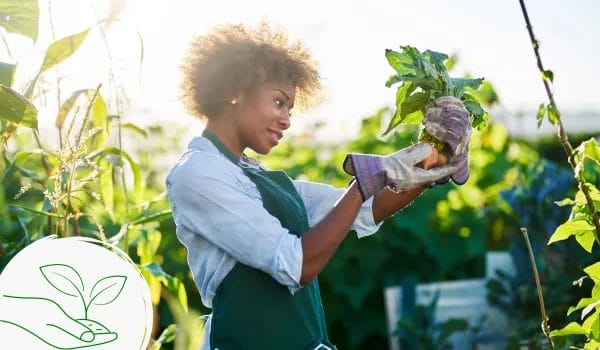Jumpstart Your Green Home Improvements Today
Discover the simple yet powerful steps to ignite your sustainable journey and create a greener home starting right now!

Introduction To Eco-Friendly Home Improvements
Are you seeking ways to make your living space more environmentally friendly while saving on energy costs? You’ve come to the right place! In this beginner’s guide, we’ll explore tips and techniques that can transform your home into an eco-friendly sanctuary.
From renewable energy sources to organic gardening and water conservation, our comprehensive guide will provide actionable steps for both new homeowners and those looking to upgrade their existing abodes.
Jump to Your Favorite section
Renewable Energy Sources
Harnessing renewable energy sources is a crucial step towards creating a sustainable home and reducing our dependence on fossil fuels. Solar, wind, hydroelectric, biomass, and geothermal power are all viable options for homeowners looking to transition to eco-friendly energy alternatives.
Solar power is arguably the most popular choice for homeowners seeking an eco-friendly home improvement option. Installing solar panels on rooftops or in yard spaces can generate electricity to power your entire household while significantly reducing energy bills.
For instance, according to the Department of Energy (DOE), residential solar panel installations have increased by over 50% in recent years as more people embrace this clean source of energy.
Additionally, hydroelectric systems can harness the kinetic energy from flowing water sources such as rivers or streams; however, these installations often require professional assessments and permits due to their potential ecological impact on wildlife habitats.
Biomass technology involves converting organic materials like wood chips or agricultural residues into usable heat through combustion or digestion processes—perfect for those who have access to waste products from farming activities or manage large wooded properties.
In conclusion, adopting renewable energy sources not only promotes environmental conservation but also saves you money in terms of reduced utility expenses over time—an investment worth considering when aiming for an eco-friendly home improvement project.
Home Energy Saving Tips
As a green consumer looking to make your home more eco-friendly, consider implementing these home energy-saving tips:
- Seal air leaks around windows, doors, and in the attic to prevent drafts and improve insulation.
- Upgrade to Energy Star-certified appliances, which consume less energy and reduce greenhouse gas emissions.
- Install programmable thermostats to maintain a comfortable temperature while conserving energy during off-peak hours.
- Replace traditional incandescent light bulbs with energy-efficient LED or CFL bulbs for long-lasting illumination and reduced electricity consumption.
- Insulate your home’s walls, roof, and floors to minimize heat loss during winter and heat gain during summer.
- Use ceiling fans instead of air conditioning units for cost-effective cooling solutions.
- Invest in solar panels to harness renewable energy from the sun and reduce reliance on fossil fuels.
- Plant trees strategically around your property to provide natural shade, which can help lower cooling costs in the summer months.
- Unplug electronics when not in use or utilize smart power strips to eliminate phantom energy consumption.
- Install low-flow showerheads and faucets for efficient water usage without sacrificing pressure quality.
- Consider upgrading to a tankless water heater that heats water on – demand instead of constantly maintaining heated storage tanks.
- Clean or replace air filters regularly in heating and cooling systems for optimal efficiency.
- Opt for energy-efficient window treatments such as thermal curtains or shades that block out sunlight during hot days while retaining warmth in colder months.
By implementing these tips as part of your Ultimate Beginner’s Guide to Green Home Improvements journey, you’ll be well on your way toward creating a more sustainable living space that benefits both the environment and your wallet in the long run.
Efficient Appliances
Investing in energy-efficient appliances is an essential aspect of creating a sustainable and eco-friendly home. When you choose these appliances, not only do they help lower your carbon footprint by reducing energy use, but they also save you money on utility bills in the long run.
To further maximize energy efficiency at home, consider incorporating smart thermostats that can automatically adjust heating and cooling settings for optimal comfort while using minimum energy.
Additionally, switching to LED light bulbs can greatly decrease your electricity consumption as they last longer and require far less wattage compared to traditional incandescent or halogen bulbs.
By upgrading to efficient appliances throughout your household, from kitchen utilities down to lighting options – homeowners make a conscious effort to support renewable resources over fossil fuels.
Eco-friendly Home Design
Ecofriendly home design is more than just using sustainable materials. It’s an approach to building and living that reduces environmental impact and promotes energy efficiency.
One important aspect of eco-friendly home design is passive solar heating, which uses the natural heat from the sun to warm a space.
Another important aspect of eco-friendly home design is proper insulation. By using high-quality insulation on walls, floors, and roofs, homeowners can reduce their energy consumption considerably.
Choosing fixtures that conserve water is another key element of eco-friendly home design.
Overall, embracing an environmentally responsible approach to building means rethinking every aspect of construction – from foundation to roof.
Top Appliances & Green Home Blogs
Organic Gardening
Organic gardening is a crucial part of creating a sustainable home. By growing your own fruits, vegetables, and herbs, you can promote sustainability and enjoy fresh produce straight from your garden. Here are some tips to get started:
- Site selection: Choose a location with adequate sunlight and soil drainage for your garden.
- Watering: Use drip irrigation or a watering can to conserve water and avoid overwatering.
- Crop rotation: Plant different crops every season to prevent soil depletion and pests.
- Composting: Use compost as fertilizer to reduce waste and add nutrients to the soil.
- Harvesting: Pick fruits and vegetables at their peak ripeness for the best flavor and nutritional value.
By implementing these organic gardening techniques, you can create a sustainable home that benefits yourself and the environment. Plus, growing your own produce can help you save money on groceries while promoting healthier eating habits.
Water Conservation
Water conservation is crucial when creating a sustainable home. Here are some tips on how to conserve water:
- Install low-flow fixtures like faucets, toilets, and showerheads that can reduce water consumption by up to 60%.
- Fix any water leaks immediately, as this can save hundreds of gallons of water per year.
- Collect rainwater for outdoor use by using a rain barrel or cistern.
- Consider using drought-resistant plants in your garden and landscaping to save water.
- Learn about the quality of your local water supply to determine what kind of filter is needed for conserving water.
- Opt for a tankless water heater that only heats up the amount of hot water you need rather than constantly heating up a full tank.
- Upgrade to energy-efficient washing machines and dishwashers with high Energy Star ratings that consume less water.
- Take shorter showers and turn off the faucet while brushing your teeth.
- Use a pool cover to reduce evaporation if you have a swimming pool.
Conserving water helps protect the environment, saves money on utility bills, and reduces your carbon footprint. By implementing these tips, you can make significant strides towards creating an eco-friendly home and reducing your impact on the environment.





